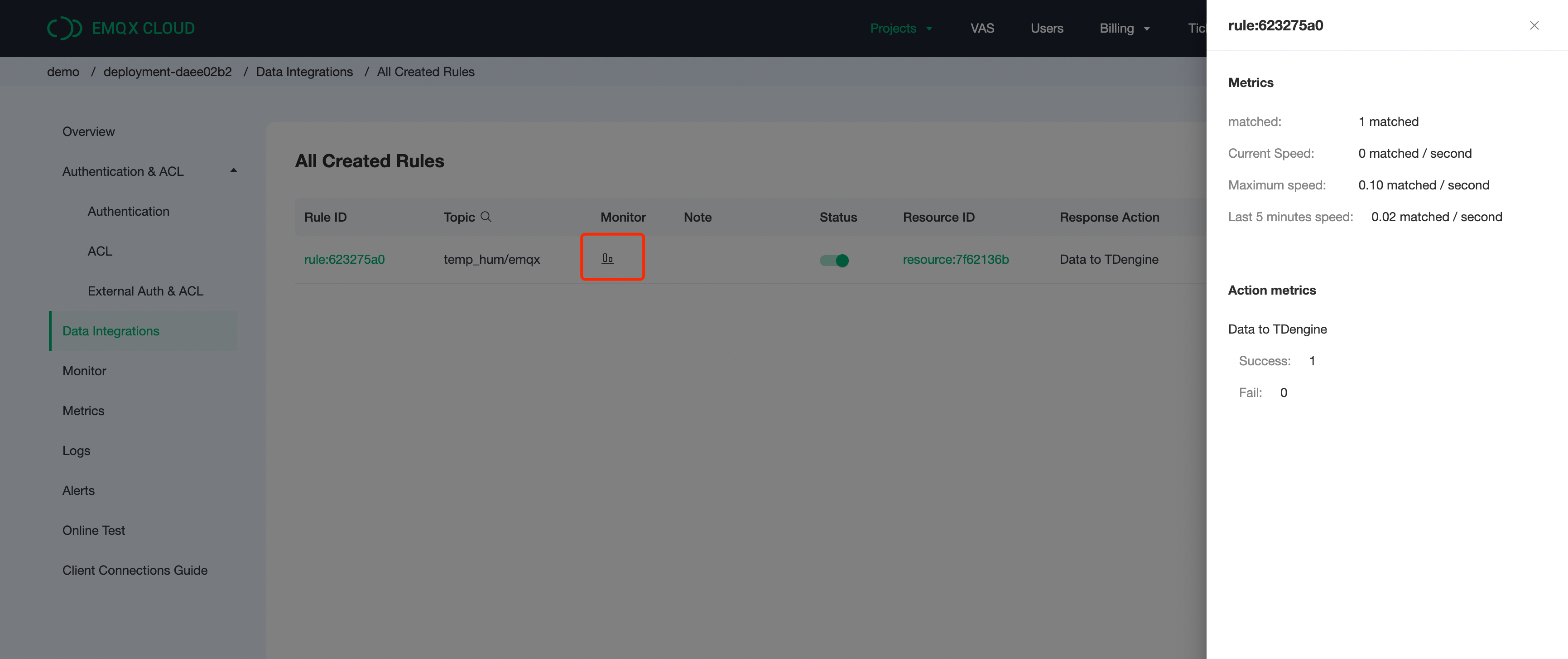Integrate with TDengine
TDengine is an open source big data platform designed and optimized by TOS Data for IoT, Telematics, Industrial Internet, IT O&M, and other applications.In addition to the core 10x faster time-series database functionality, it also provides caching, data subscription, streaming computing and other features to minimise the complexity of R & D and O & M.
In this article, we will simulate temperature & humidity data and report it to EMQX Cloud via the MQTT protocol, and then use the EMQX Cloud data integration to save the data into TDengine.
Before you start, you need to complete the following operations:
- A deployment (EMQX Cluster) has been created on EMQX Cloud.
- For Professional Plan users: Please complete Peering Connection Creation first, all IPs mentioned below refer to the internal network IP of the resource.(Professional Plan with a NAT gateway can also use public IP to connect to resources).
- For BYOC Plan users: Please establish a peering connection between the VPC where BYOC is deployed and the VPC where the resources are located. All IPs mentioned below refer to the internal IP of the resources. If you need to access the resources via public IP addresses, please configure a NAT gateway in your public cloud console for the VPC where BYOC is deployed.
TDengine configuration
Install TDengine
bash# EMQX currently supports TDengine 2.x, not 3.x yet docker run --name tdengine -d -p 6030:6030 -p 6035:6035 -p 6041:6041 -p 6030-6040:6030-6040/udp tdengine/tdengine:2.0.16.0New database
bashdocker exec -it tdengine bash taos create database emqx; use emqx;New table
Use the following SQL statement to create
temp_humtable. This table will be used to save the temperature & humidity data of device data.
"topic" is a reserved keyword of TDengine. Using "topic" as the field name will cause the table build to fail.
CREATE TABLE temp_hum (
ts timestamp,
client_id NCHAR(64),
mqtt_topic NCHAR(255),
temp BINARY(1024),
hum BINARY(1024)
);EMQX Cloud Data Integrations configuration
Go to your deployment and click on the Data Integrations menu bar on the left.
New Resource
Click on Data Integrations on the left menu bar → Resources, click on New Resource and drop down to select the TDengine resource type. Fill in the information from the newly created TDengine database: the default username is root, and the default password is taosdata. TDengine does not configure the database name in the resource, please configure it in SQL. If there is an error, you should promptly check whether the database configuration is correct.
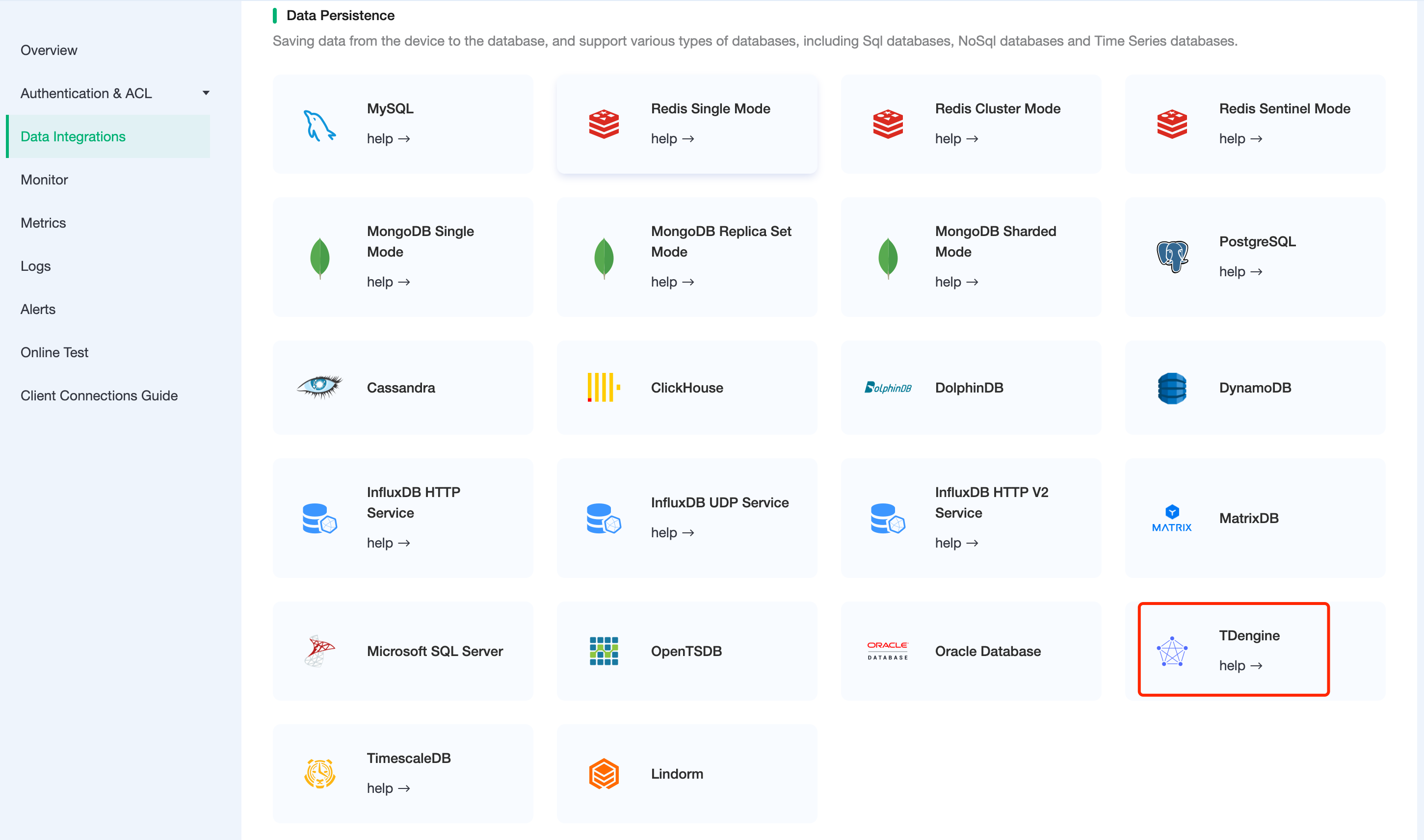
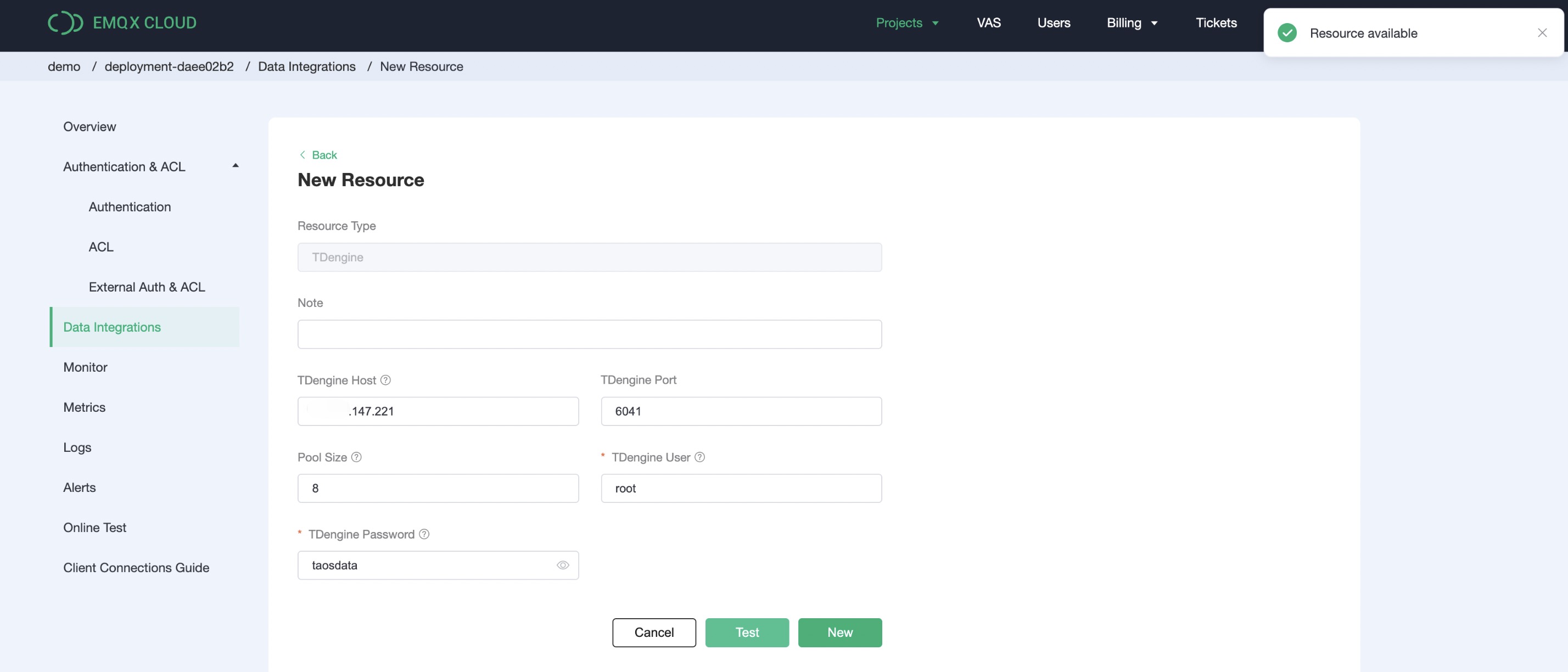
Fill in rule
Click
Data Integrationon the left menu bar, find the configured resource, click New Rule, and then enter the following rule to match the SQL statementsqlSELECT now_timestamp('millisecond') as ts, clientid as client_id, topic as mqtt_topic, payload.temp as temp, payload.hum as hum FROM "temp_hum/emqx"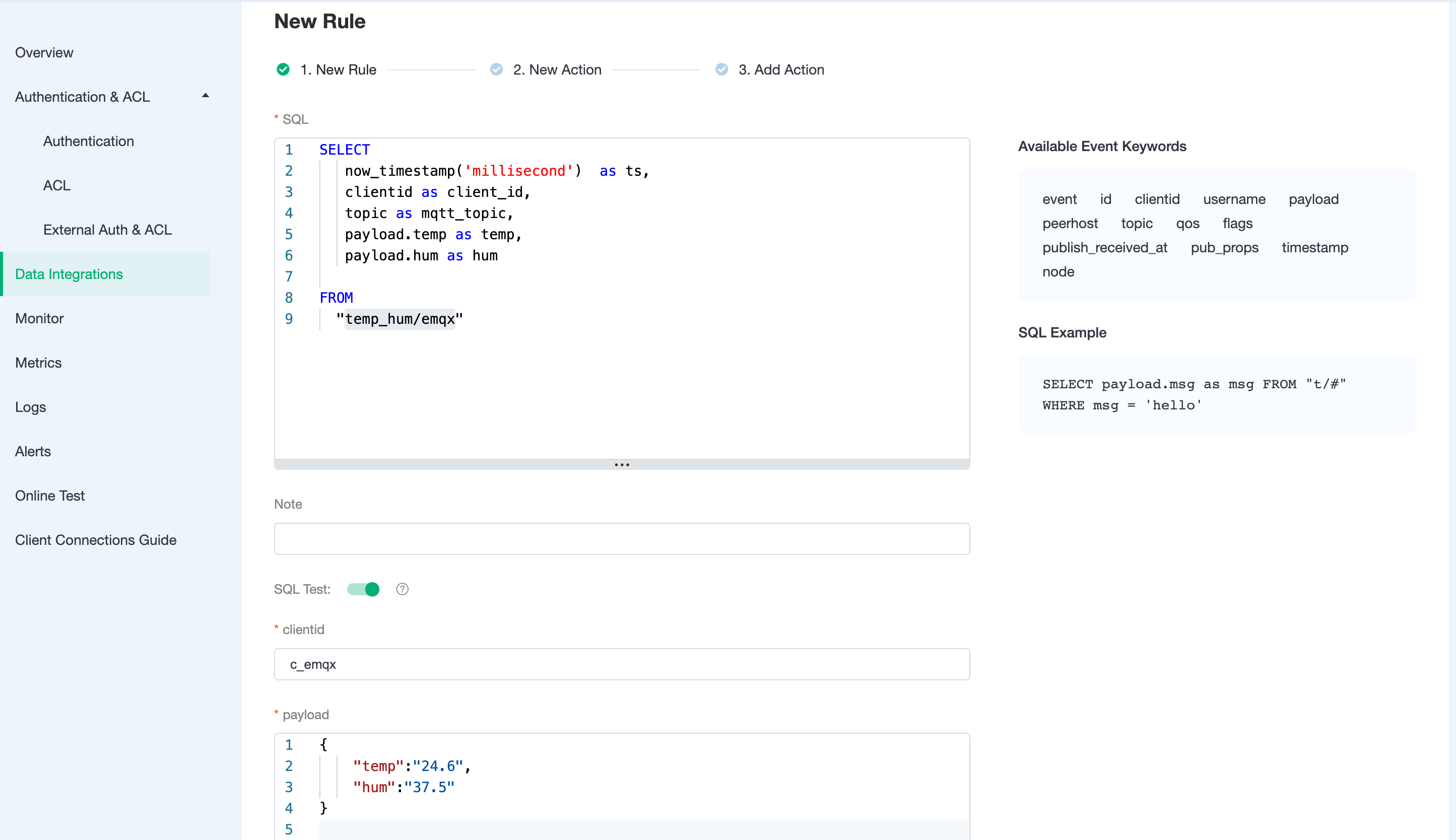
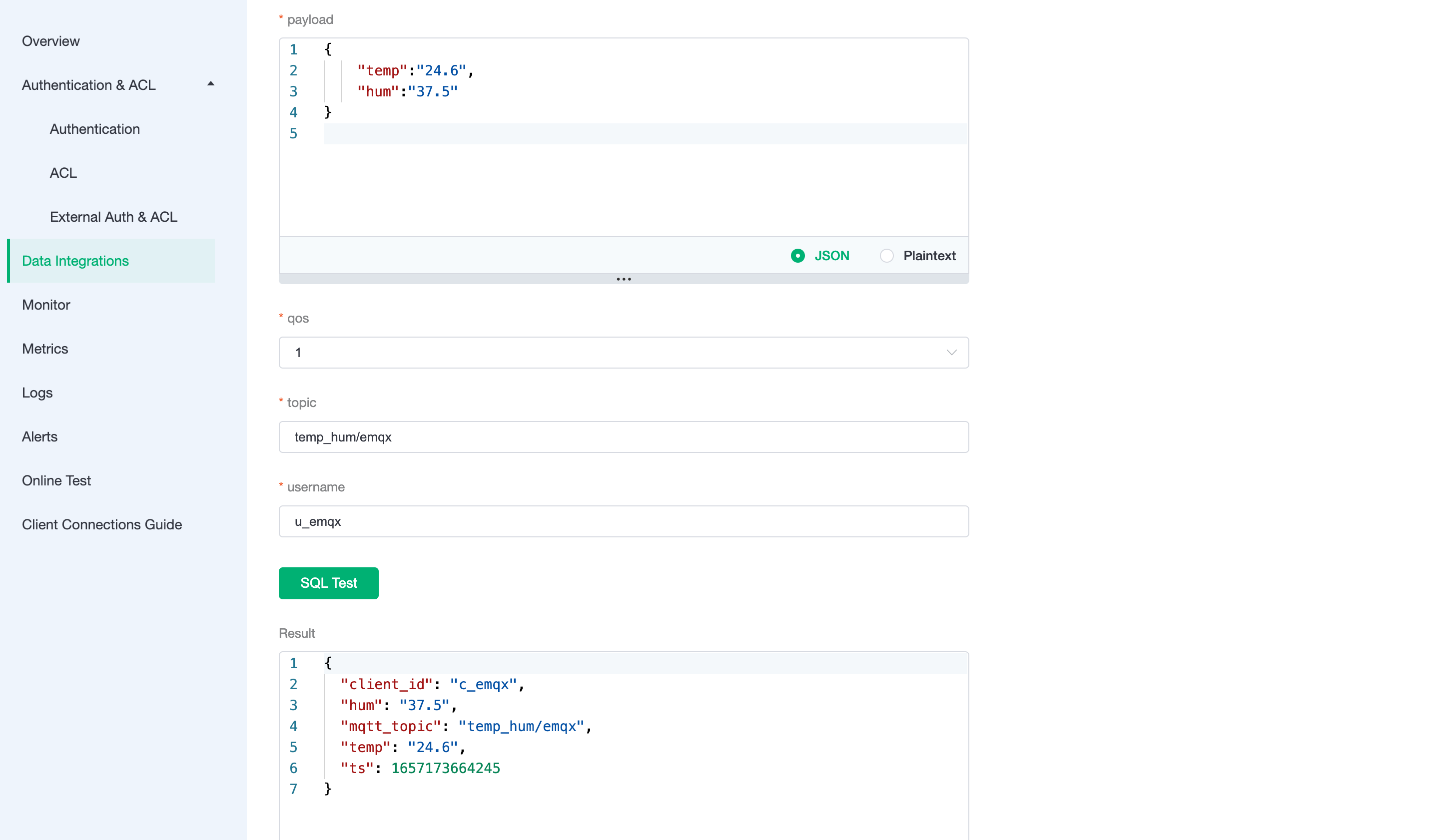
Add a response action
Click Next, select the resource created in the first step, drop down and select Action Type → Data Persistence → Data to TDengine, Enter the following data to the SQL template. You need to specify the database name in SQL, and the character type should be enclosed in single quotes, click Confirm.
sqlinsert into emqx.temp_hum(ts, client_id, mqtt_topic, temp, hum) values (${ts}, '${client_id}', '${mqtt_topic}', '${temp}', '${hum}')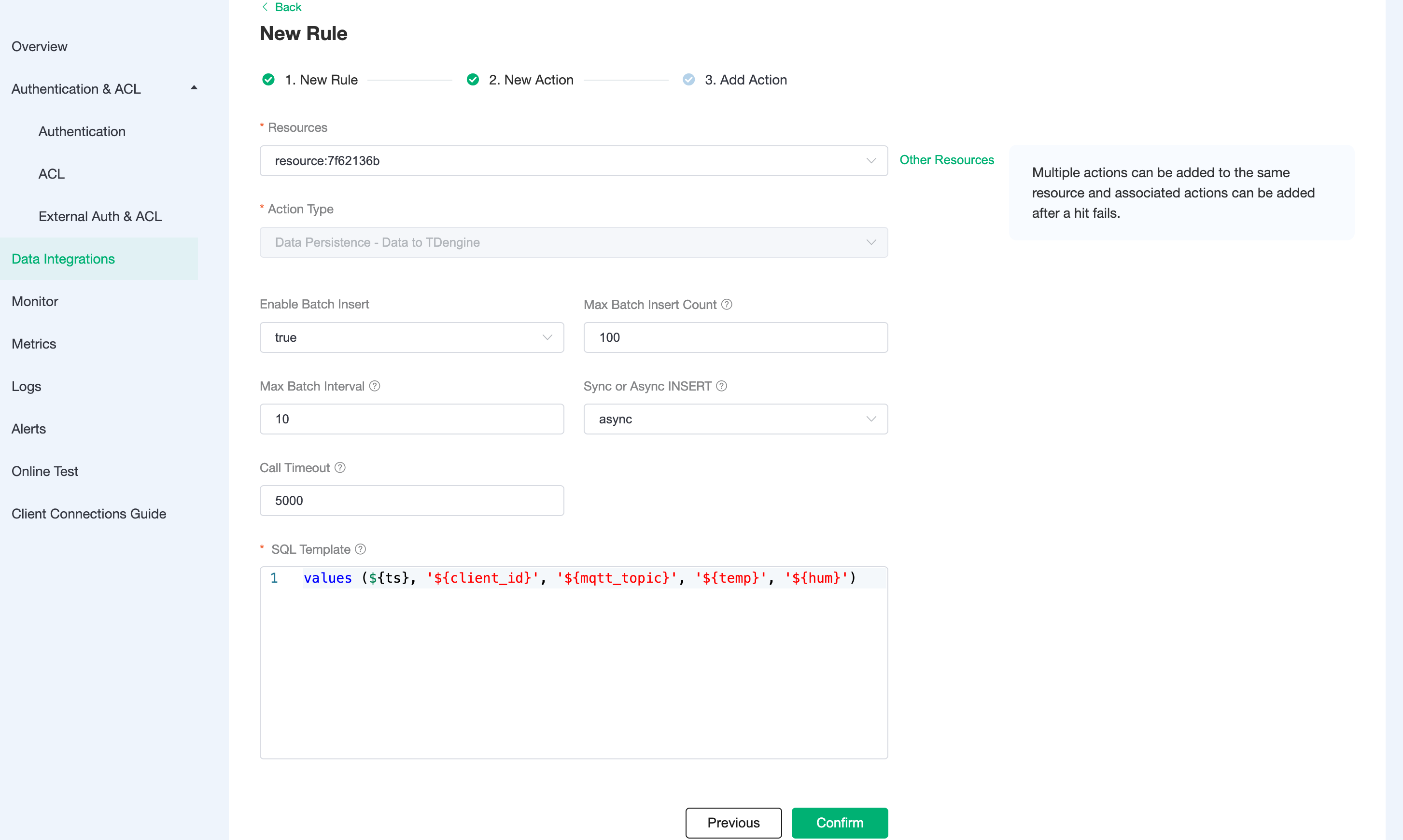
Test
Use MQTTX to connect the deployment
You need to replace broker.emqx.io with the created deployment connection address, and add client authentication information to the EMQX Cloud Dashboard.
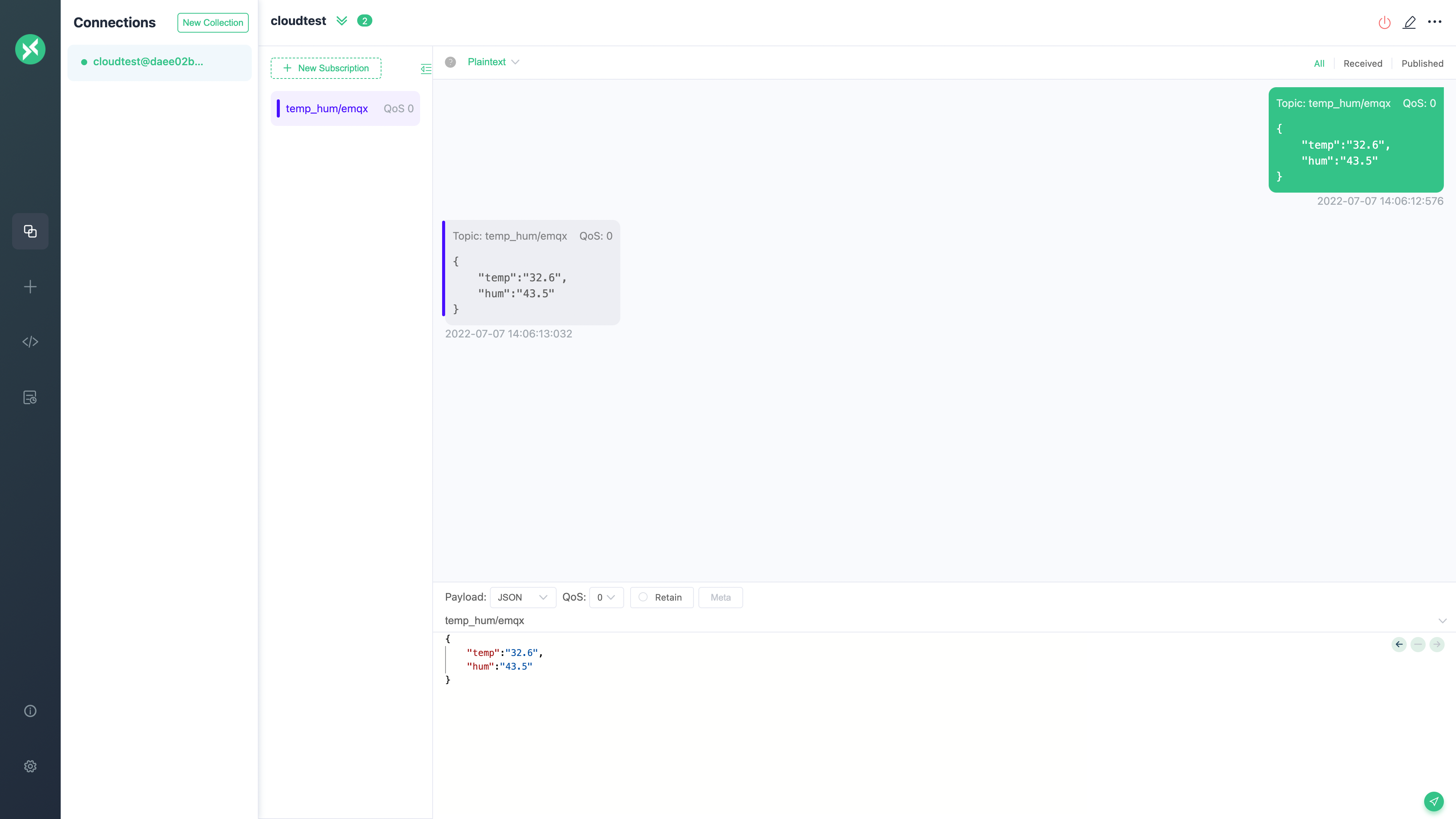
View the data saving results
sqlselect * from temp_hum;
3.View rules monitoring
Check the rule monitoring and add one to the number of success.
